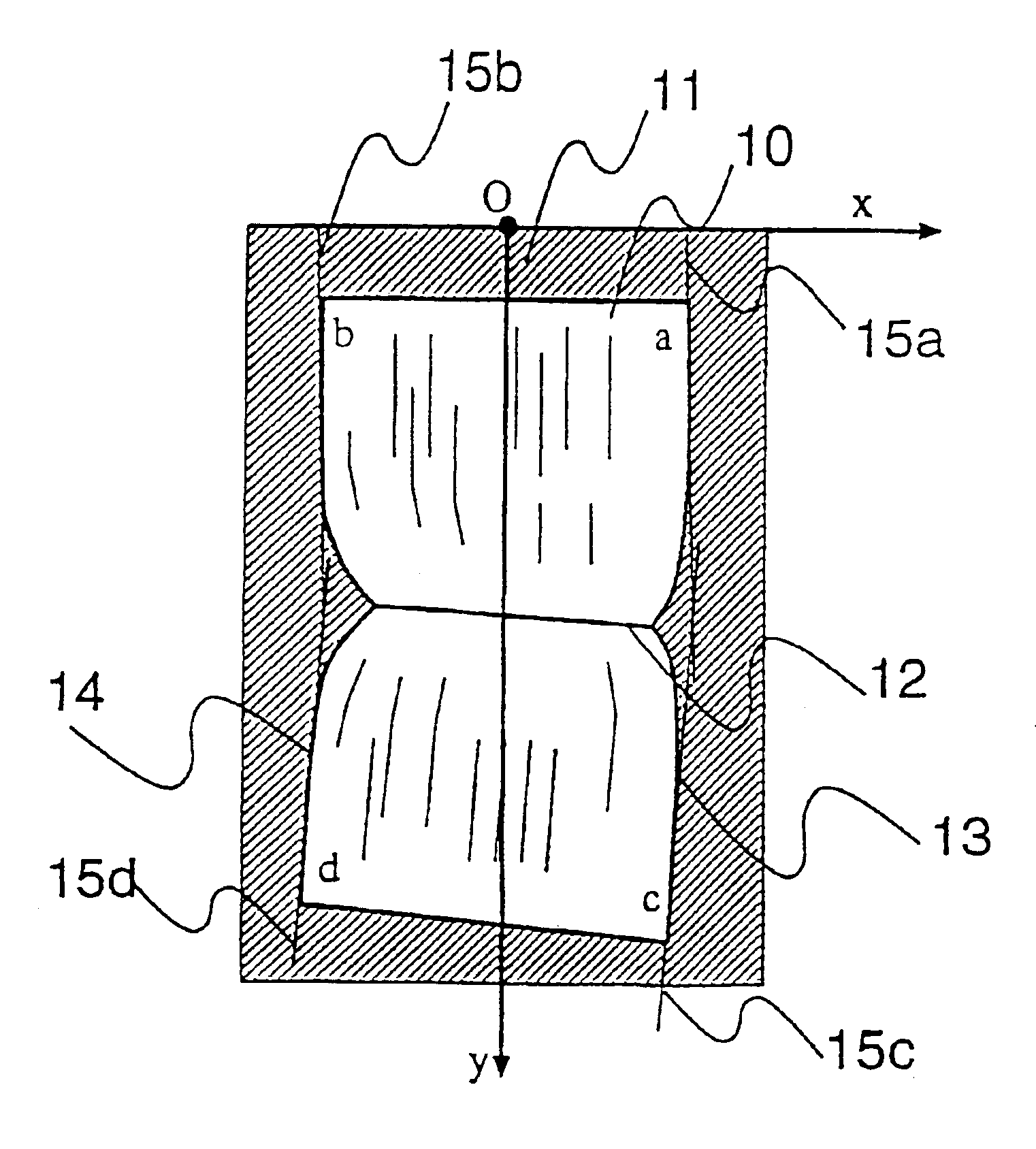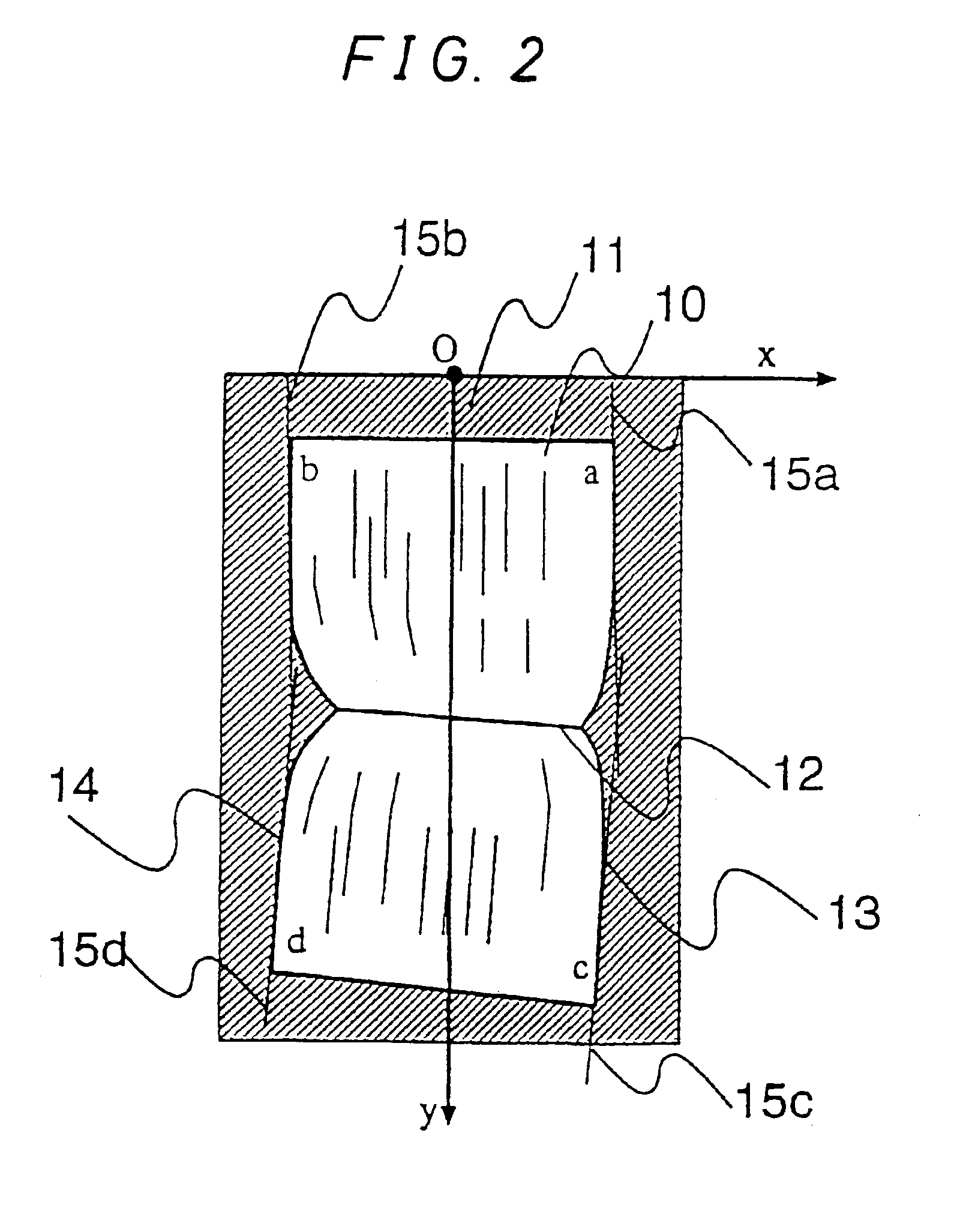Image correction apparatus
a technology of image correction and apparatus, which is applied in the field of image correction apparatus, can solve the problems of requiring the provision of a very complex mechanism, the inability to always correct the captured image, and the limited luminance of the light sour
- Summary
- Abstract
- Description
- Claims
- Application Information
AI Technical Summary
Benefits of technology
Problems solved by technology
Method used
Image
Examples
embodiment 1
[0054][Embodiment 1]
[0055]FIG. 1 is a block diagram showing the electrical configuration of an image correction apparatus 1 according to one embodiment of the present invention. The image correction apparatus 1 includes a central processing unit 2, an image input device 3, a storage device 4, and an image output device 5; these are interconnected by a bus line 6, and signals are transferred via the bus line 6. In the explanation hereinafter given, the description of the bus line will be omitted.
[0056]The image input device 3 as image input means is implemented, for example, by an image reading device such as a scanner. Alternatively, the image input device 3 may be implemented as a device for reading images prerecorded on a recording medium such as a CD-ROM (Compact Disk-Read Only Memory), a floppy disk, or an magneto optical disk.
[0057]The image output device 5 as image output means is implemented, for example, by a printer. Alternatively, the image output device 5 may be implement...
embodiment 2
[0099][Embodiment 2]
[0100]The second embodiment hereinafter described differs from the first embodiment in that image reducing means is added, and in that the document shape computing means used is different. In the present embodiment, the image reducing means and the document shape computing means are both implemented as programs run on the central processing unit 2, but each of these means may be implemented in hardware logic. The image reducing means takes an average over a plurality of pixels in an input image, and outputs it as one pixel. Alternatively, this can be accomplished by decimating pixels for output. In the first embodiment, the document shape is obtained from the input image, but since the resolution of an input image to a copying machine, etc. is very high, for example, 400 dpi or 600 dpi, if the document shape is to be obtained from such a high resolution image, there arises the problem that it takes a very large amount of memory and considerable computation time. ...
embodiment 3
[0104][Embodiment 3]
[0105]The third embodiment described hereinafter differs from the first embodiment by the inclusion of selecting means for making a selection as to whether image correction is to be performed or not, so that the input characteristics can be changed for the image to be input. The selecting means may be implemented as a selection menu in software or as a hardware switch. For example, when performing correction, the input image is corrected before being output, and when not performing correction, the input image is output as is. In an ordinary copying machine, the input characteristics are adjusted so that black characters appear black and white background appears white; on the other hand, in the image correction apparatus of the present invention, since document edges need to be detected, if images near the binding blacken, edges cannot be detected correctly. When performing distortion correction, if the image is input a little light, images near the binding do not...
PUM
 Login to View More
Login to View More Abstract
Description
Claims
Application Information
 Login to View More
Login to View More - R&D
- Intellectual Property
- Life Sciences
- Materials
- Tech Scout
- Unparalleled Data Quality
- Higher Quality Content
- 60% Fewer Hallucinations
Browse by: Latest US Patents, China's latest patents, Technical Efficacy Thesaurus, Application Domain, Technology Topic, Popular Technical Reports.
© 2025 PatSnap. All rights reserved.Legal|Privacy policy|Modern Slavery Act Transparency Statement|Sitemap|About US| Contact US: help@patsnap.com



